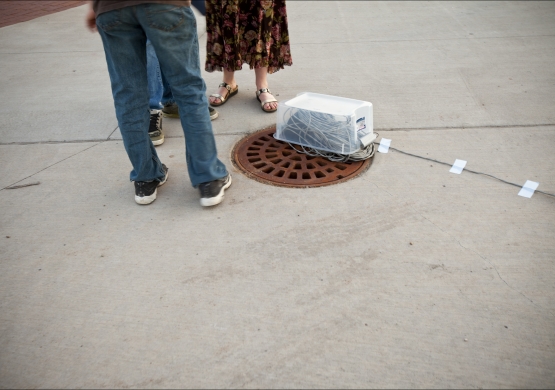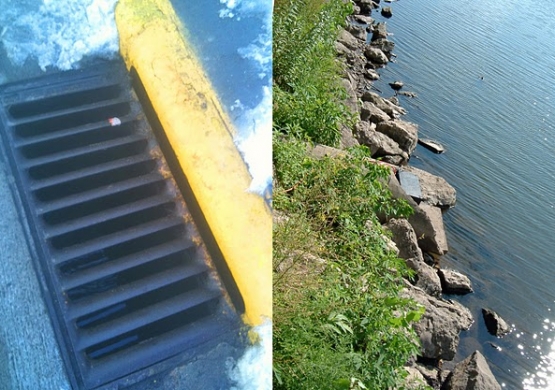Sewer Pipe Organ
Downtown pavements have many gratings for storm drains that discharge rain (and pollutants) directly from the road into the river. Many people do not realize where they go and the fact that there is no treatment for the run-off.
Each storm drain can be considered as a resonating pipe with a specific frequency response curve (a giant flute). Playing sound from one end will amplify those harmonic peaks and be audible coming out of the gratings beneath pedestrians, bouncing off buildings, and setting up standing waves over a wide area. Some pipes may be part of a network so the same signal can be heard in several locations. The sound input can be composed with the specific frequency characteristics of each pipe in mind.
Pedestrians become aware of their connection to the river from the roadside, and modify their run-off habits accordingly.
Philip Blackburn
Philip Blackburn was born in Cambridge, England, and studied music there as a Choral Scholar at Clare College. He earned his Ph.D. in Composition from the University of Iowa where he studied with Kenneth Gaburo and began work on publishing the Harry Partch archives. Blackburn’s book, Enclosure Three: Harry Partch, won an ASCAP Deems Taylor Award. He has worked at the American Composers Forum since 1991, running the innova Recordings label and developing re-granting programs and opportunities for composers. He is also a composer/ environmental sound-artist and has served as teaching artist for school residencies connected with the Flint Hills International Children’s Festival, creating multi-media performances using home-made instruments. Blackburn has published articles on topics such as Vietnamese, Garifuna, and Cuban music, the social dynamics of ensemble performance, and the use of sound in public art. He received a 2003 Bush Artist Fellowship and built an art-house in Belize, Kumquat Cottage. His house renovation project in St. Paul was featured in the New York Times.











